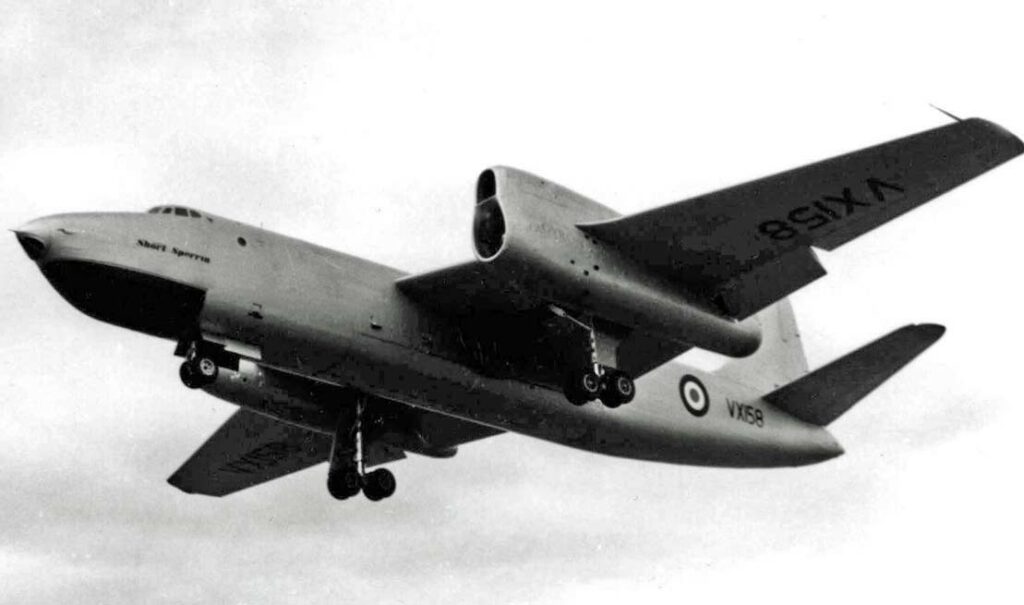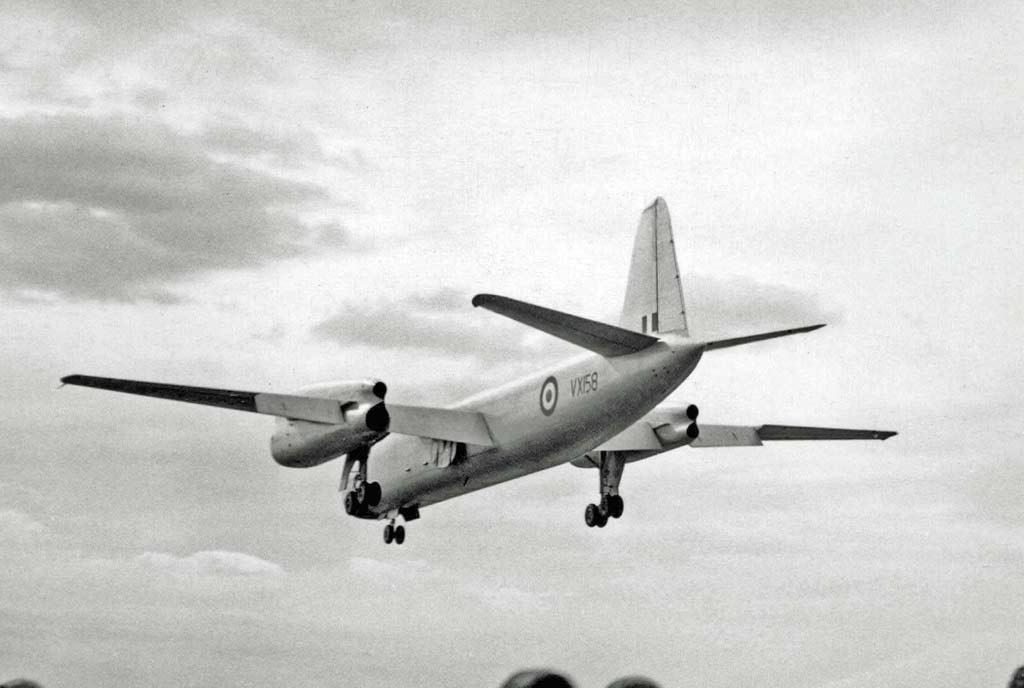The Short SA.4 Sperrin was a British high-altitude, jet-powered strategic bomber with a conventional design.
In brief
The Short SA.4 Sperrin was an early British jet bomber developed in the early 1950s as a stop-gap measure while more advanced designs were finalized. It featured a straight wing, four jet engines housed in twin nacelles, and a conventional tail. Only two prototypes were built, and the aircraft never entered mass production or active service due to advancements in bomber technology that rendered the Sperrin obsolete. Despite its limited use, the Sperrin contributed valuable data to the development of later British bombers and remains a notable example of early post-war jet technology.
The Short SA.4 Sperrin represents a critical transitional phase in British aviation, reflecting the immediate post-World War II era’s rapid advancements in jet technology and strategic requirements.

History of the Development of the Short SA.4 Sperrin
In the immediate aftermath of World War II, the UK faced an urgent need to modernize its bomber fleet in response to the emerging Cold War tensions. Jet propulsion was recognized as the future of strategic bombing, offering superior speed and altitude performance. The Short SA.4 Sperrin was developed as a part of the British Air Ministry’s specifications for a new generation of jet-powered bombers that could carry nuclear weapons and penetrate Soviet defenses.
The program was launched by Short Brothers and Harland Limited in the late 1940s as an insurance policy against delays in more advanced projects like the Avro Vulcan and Handley Page Victor. The Sperrin was designed to be a high-altitude, long-range bomber, with its first flight taking place on 10 August 1951. While the Sperrin was seen as a less advanced alternative to its contemporaries, it provided a backup should other innovative designs fail or be delayed.
The Sperrin did not receive a NATO nickname, as it never entered operational service and remained relatively obscure in the broader context of Cold War aviation.
Design of the Short SA.4 Sperrin
The design of the Short SA.4 Sperrin was relatively conservative compared to the revolutionary delta and crescent-winged bombers of its time. It featured a high-wing configuration with four Rolls-Royce Avon turbojet engines mounted in twin nacelles under the wings. The aircraft was approximately 120 ft in length with a wingspan of about 120 ft, typical of the large bombers of its era.
The Sperrin’s design emphasized simplicity and reliability, using proven technologies to minimize development risk and production time. This approach meant the Sperrin lacked the performance and technological advancements of its counterparts but was ready for production much sooner.
However, the conservative design also meant the Sperrin was less capable in terms of speed, altitude, and range compared to more advanced bombers. As a result, it was quickly surpassed by other developments in British aviation, leading to its relegation as a test and development platform.
Performance of the Short SA.4 Sperrin
The Short SA.4 Sperrin’s performance was modest compared to other bombers of the era. It was capable of reaching speeds of up to 500 mph and had a service ceiling of approximately 40,000 feet. The range was sufficient for strategic missions of the time, but not exceptional. Its payload capacity was designed to carry the nuclear and conventional bombs of the early Cold War period.
While the Sperrin’s performance was adequate for a stop-gap solution, it was outclassed by the more advanced bombers that followed, such as the Vulcan and Victor, which featured higher speeds, greater ranges, and improved altitude capabilities thanks to their more innovative designs.
Variants of the Short SA.4 Sperrin
Only two prototypes of the Short SA.4 Sperrin were built, designated VX158 and VX161. There were no production variants as the aircraft was never ordered into mass production. The two prototypes were used for various testing purposes, including aerodynamic research and engine development programs, contributing to the advancement of British aviation technology.

Military use and combat of the Short SA.4 Sperrin
The Short SA.4 Sperrin never saw active military service or combat, as it was primarily intended as a backup option and a research platform. By the time the prototypes were flying, it was clear that more advanced bomber designs would fulfill the Royal Air Force’s needs, and the Sperrin was relegated to a secondary role. Its main contribution was in serving as a testbed for new technologies and helping bridge the gap between piston-engine bombers and the next generation of jet-powered strategic bombers.
The Short SA.4 Sperrin, while never achieving the fame or impact of its contemporaries, played a crucial role in the evolution of British jet bombers. As a stop-gap measure, it exemplified the pragmatic approach of post-war British aviation, ensuring continued development and readiness during a period of rapid technological advancement. The Sperrin’s legacy is one of transition, helping pave the way for the iconic bombers that would define the Cold War era, and remains a testament to the innovative spirit of the time.
Back to the experimental aircraft section.